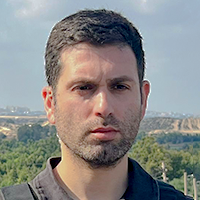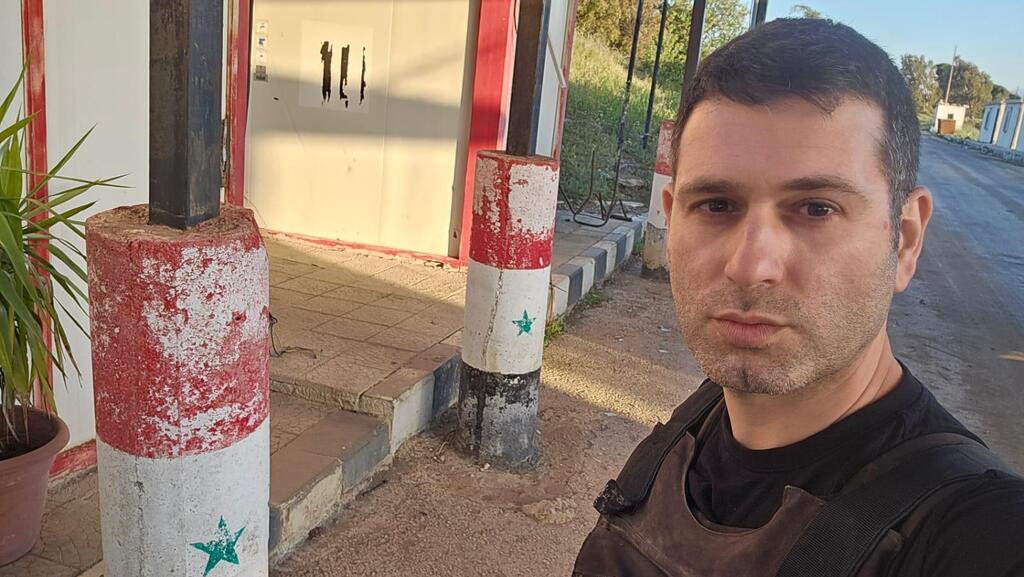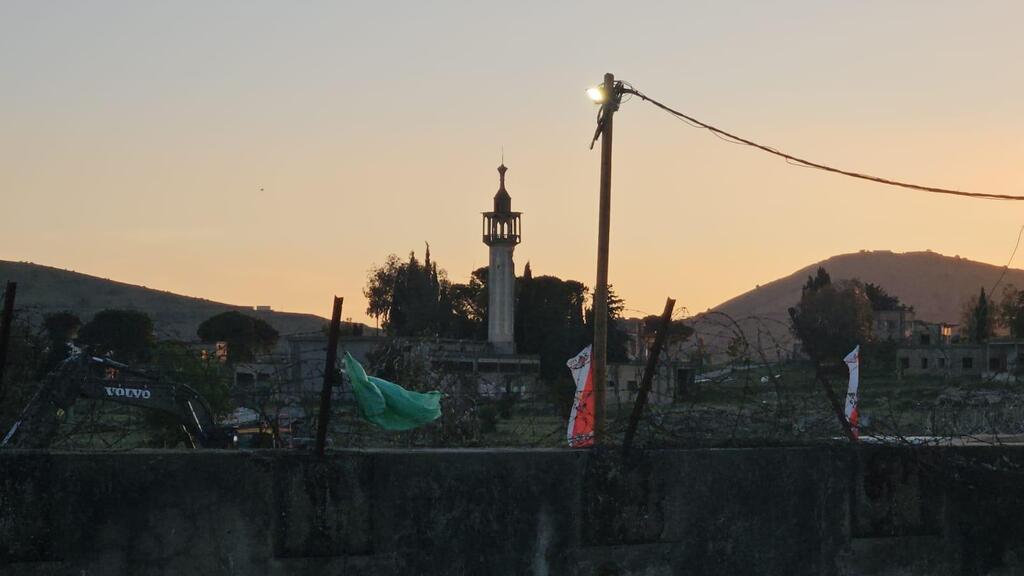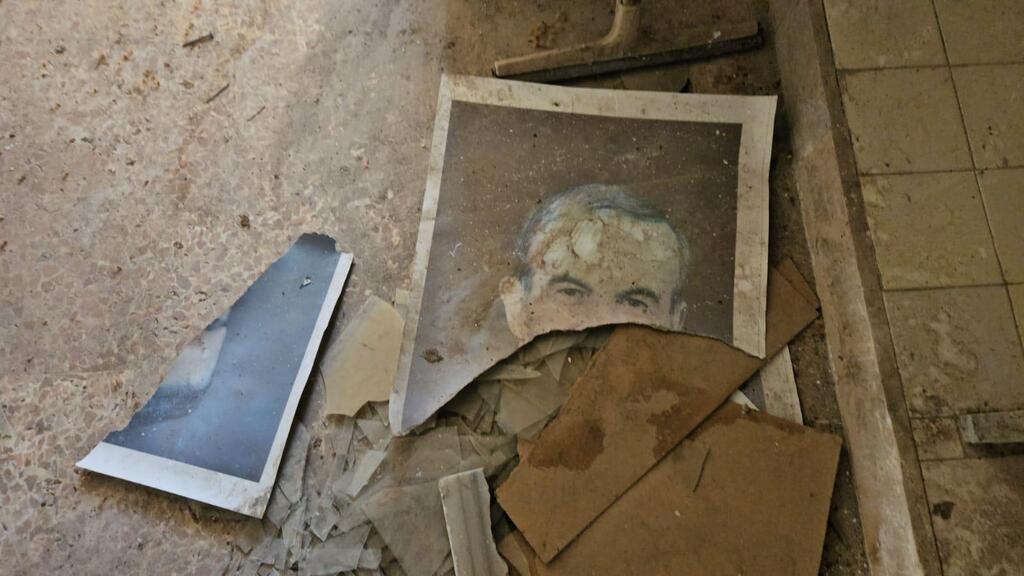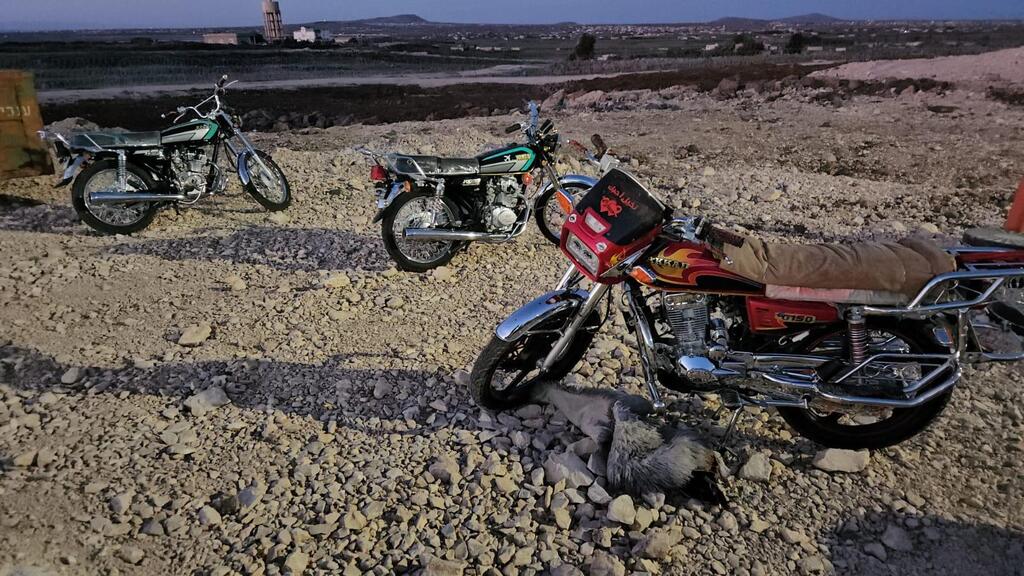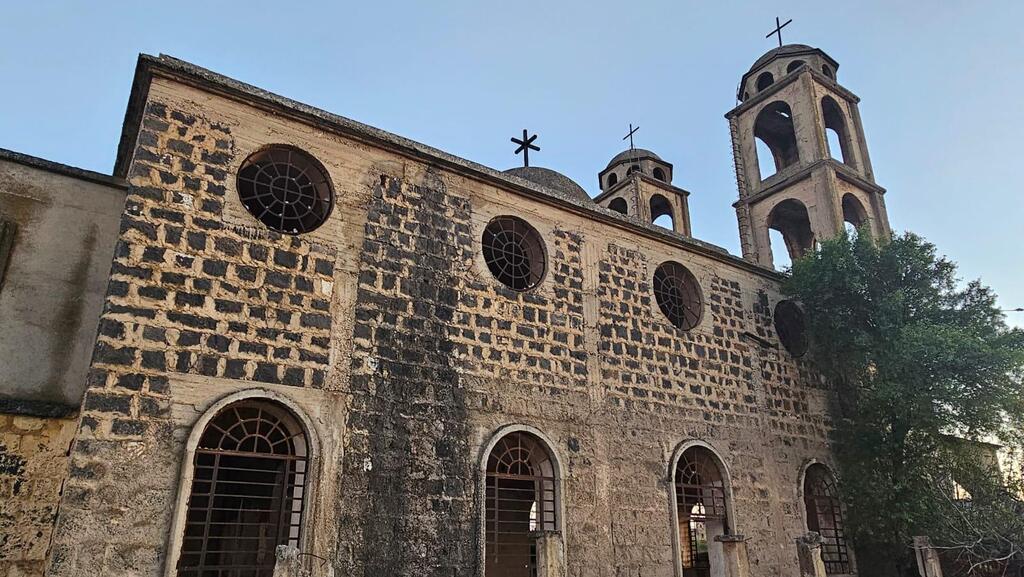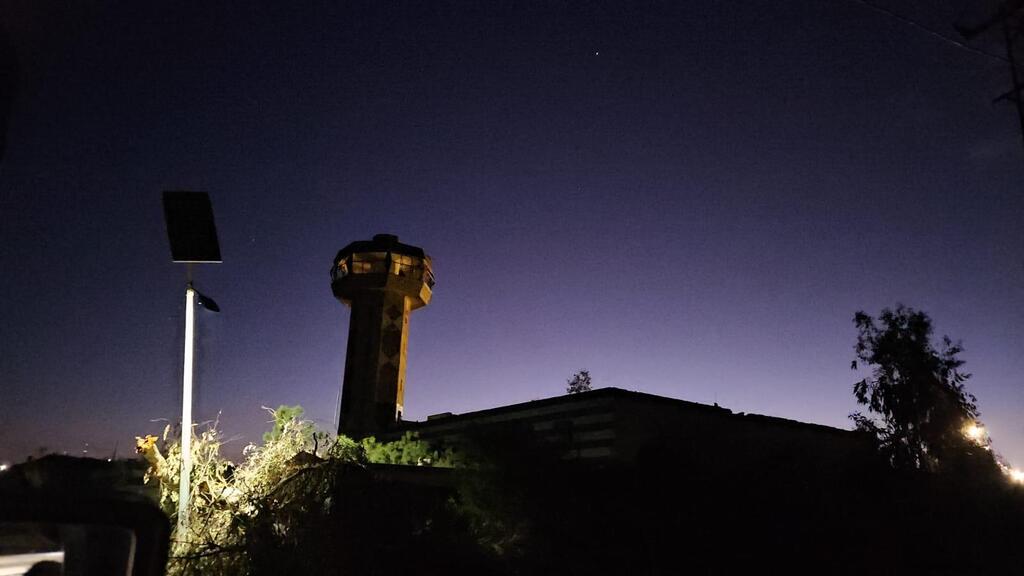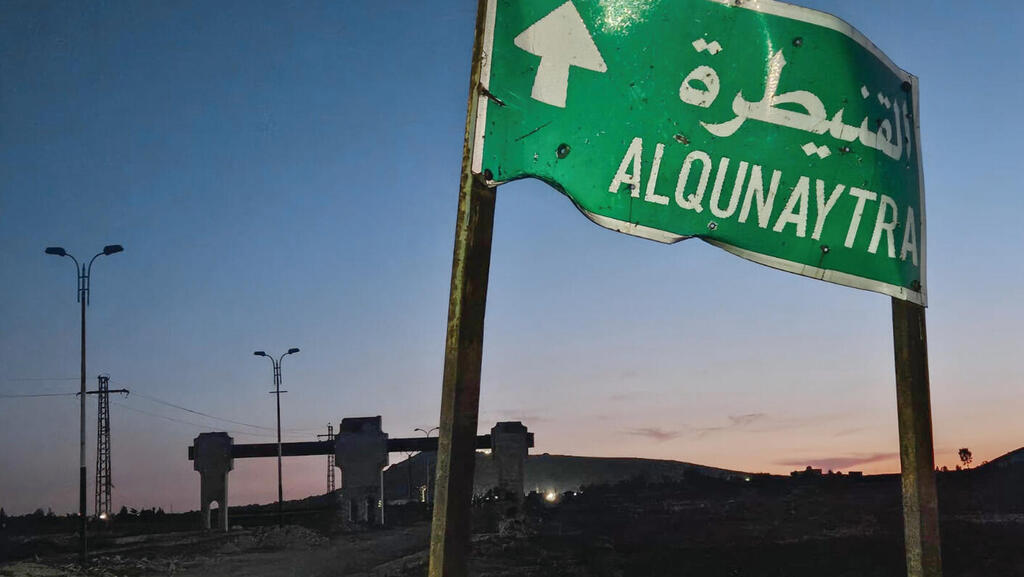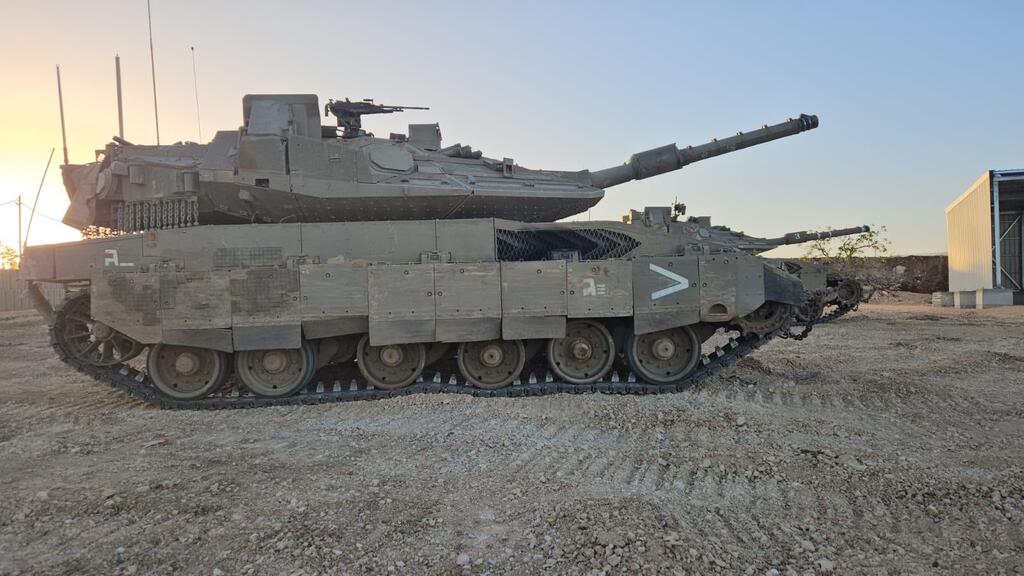Getting your Trinity Audio player ready...
At the Quneitra border crossing — the only passage between Israel and Syria — an IDF paratrooper from the 202nd Battalion opens the yellow gate on the Israeli side. Helmetless due to the low threat level, he’s followed by another soldier who unlocks the inner gray gate leading east.
Roughly 80 km (50 miles) from the crossing, Israeli Air Force helicopters recently air-dropped aid to Druze communities near As Suwayda. More than 20 wounded Syrian Druze have also been evacuated through this gate for medical treatment in Israel. Despite the ongoing massacres of Druze by jihadist groups just miles away, the Israeli-held border zone remains quiet.
Six months after the IDF took control of the Syrian Golan without a fight, Israeli military presence has tripled. The IDF now operates along both sides of the border with three times the number of routine security battalions. The abandoned Syrian military outposts — once adorned with Syrian flags and portraits of Hafez Assad and his son Bashar — are fading symbols of the old regime.
In the northern Syrian Golan, 20–30 km (12-18 miles) from the border, the IDF has permitted forces loyal to new Syrian President Ahmad al-Sharaa — leader of Hay’at Tahrir al-Sham (HTS) — to act as a local police force in local towns. Israeli troops move freely through these towns en route to nine new outposts built in Syrian territory. The area is considered secure.
Get the Ynetnews app on your smartphone: Google Play: https://bit.ly/4eJ37pE | Apple App Store: https://bit.ly/3ZL7iNv
In contrast, the southern Golan remains volatile. The Sunni-majority villages on the road to Daraa, once supportive of Jabhat al-Nusra during Syria’s civil war, have not disarmed. Unlike the quieter north, there’s no cooperation with Israeli forces.
Two weeks ago, paratroopers from the IDF’s 890th Battalion came under heavy fire while patrolling the Syrian town of Nawa. Gunmen fired from balconies with heavy machine guns. The soldiers took cover and were unharmed.
According to a senior officer, Israeli drones responded by eliminating seven terrorists. “We could have taken out 100 under the rules of engagement,” he said, “but chose not to.”
Further east, the IDF monitors the second ridge of volcanic hills — around 18–20 km (11–12 miles) from the border — but has not moved in. Unidentified figures occasionally approach abandoned Syrian posts there and are repelled with warning fire. Despite interest from Damascus, Israel has not allowed HTS forces to access the area.
“The al-Sharaa regime is still struggling to consolidate power,” said a senior IDF officer. “It doesn’t control vast regions, including the Alawite-dominated coast, Turkish- and Kurdish-held northern zones and Bedouin areas in the southeast. It’s doubtful this border region with Israel is a top priority for them right now.”
HTS's limited control, foreign interests linger
Western diplomats recently visited Damascus to assess HTS control. According to IDF officials who debriefed them, key ministries such as defense and foreign affairs appeared largely deserted — only a few rooms were staffed in buildings meant to host dozens of offices.
Israeli intelligence estimates HTS has around 60,000 lightly armed soldiers who mostly operate in pickup trucks. Following Iran’s withdrawal from Syria — including the Golan — Russia still maintains forces along the coast and in Qamishli in the northeast.
Israel held talks with Turkish representatives to coordinate military activity in Syria. The IDF believes Turkey is interested in building a standing army for al-Sharaa, especially after much of Assad’s vast weapons stockpiles were destroyed by Israeli forces. However, Ankara remains hesitant over the financial cost.
About a month ago, IDF officers held a rare meeting with roughly 60 Druze sheikhs from both Israel and Syria to strengthen ties. An initiative to allow Syrian Druze laborers to work in the Israeli Golan was blocked by Israeli lawmakers, reportedly over insurance and bureaucratic issues.
Local normalization with Syria — at least in the Golan — is progressing slowly. As quiet prevails, Israeli troops increasingly patrol without helmets and travel solo or in small teams, unlike the cautious procedures early on.
Still, the main concern remains a sudden convoy of armed pickups traveling from deeper inside Syria via the Damascus–Quneitra highway. “The distance between Quneitra and Kibbutz Ein Zivan is about five minutes at high speed,” warned Lt. Col. G., the Golan Brigade’s operations officer.
Infrastructure, deterrence and readiness
Standing atop the former Quneitra police station — a grim, Soviet-style building with barred cells — soldiers now sleep in new fortified bases built by Israel at a cost of tens of millions of shekels. The troops receive meals from kitchens nearby on the Israeli side.
The IDF is also slowly advancing a massive engineering project to fortify the border. So far, about 20% of the 90-km (56-mile) buffer zone with Syria has been completed, including deep trenches and defensive embankments.
During a visit near the village of Qahtaniyah, soldiers stop near three smiling Syrian children — one already wearing a shirt bearing al-Sharaa’s image. Units like the 77th Battalion remain alert, though many admit the IDF’s real focus now lies in Gaza.
At another outpost, paratroopers have confiscated flashy motorcycles from Syrian youths who ventured too close — possibly for intelligence gathering. Intelligence collection in the area remains limited, with only one or two arrests per month.
“Our tactics here are similar to the West Bank — surprise checkpoints, patrols,” said Lt. Col. G. “But if we get a specific warning or intel on a hostile actor, we strike immediately and without hesitation.”



